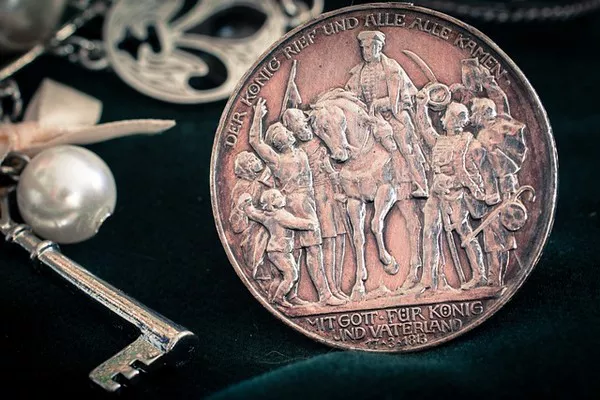Investing in silver has long been considered a strategic move for individuals looking to diversify their portfolios. Unlike stocks or bonds, silver offers a tangible asset that can act as a hedge against inflation and economic uncertainty. However, with various forms of silver available for investment, it’s essential to understand the nuances of each type to make an informed decision. In this article, we will explore the different forms of silver investment, analyze their pros and cons, and determine the best types for your investment strategy.
Understanding Silver as an Investment
Silver has been used as a form of currency, jewelry, and an industrial metal for centuries. Its intrinsic value stems from both its historical significance and practical applications, ranging from electronics to solar energy. As an investment, silver can be categorized into several types, including physical silver (bullion, coins, and jewelry), silver ETFs (exchange-traded funds), and silver mining stocks. Each type has its unique characteristics, risks, and rewards.
1. Physical Silver
a. Silver Bullion
Silver bullion refers to the physical form of silver, typically in the form of bars or ingots. Bullion is measured in troy ounces and is usually produced by well-known mints.
Advantages:
- Tangible Asset: Holding physical silver provides a sense of security, especially during economic downturns.
- Intrinsic Value: Bullion reflects the current market price of silver and can be easily sold when needed.
Disadvantages:
- Storage Costs: Safely storing physical silver can involve costs, such as secure vaults or home safes.
- Liquidity Issues: Selling physical silver can take time and may involve additional fees.
b. Silver Coins
Silver coins, especially those minted by government entities like the American Silver Eagle or Canadian Silver Maple Leaf, are another popular investment option.
Advantages:
- Collectibility: Certain coins may appreciate in value beyond the silver content due to their rarity or historical significance.
- Legal Tender: Government-minted coins have a face value, adding an element of trust and authenticity.
Disadvantages:
- Premiums: Coins often come with higher premiums over spot price due to minting costs.
- Market Volatility: The value of collectible coins can fluctuate based on market demand.
c. Silver Jewelry
While not typically considered a primary investment vehicle, silver jewelry can have investment potential, especially if it’s crafted by renowned designers.
Advantages:
- Dual Value: Jewelry can be worn and enjoyed while also serving as an investment.
- Artistic Appeal: High-quality pieces can appreciate in value over time.
Disadvantages:
- Difficult Valuation: The value of jewelry is often subjective and can depend on fashion trends.
- Limited Liquidity: Selling jewelry may not yield immediate returns.
2. Silver ETFs
Silver ETFs provide an alternative to physical silver by allowing investors to buy shares that represent a certain amount of silver. These funds are traded on stock exchanges like regular stocks.
Advantages:
- Ease of Trading: ETFs can be bought and sold easily, providing high liquidity.
- No Storage Issues: Investors do not need to worry about physical storage or security concerns.
Disadvantages:
- Management Fees: ETFs typically come with management fees that can erode profits.
- No Physical Ownership: Investors do not own the silver physically, which may deter some.
3. Silver Mining Stocks
Investing in silver mining companies can offer exposure to silver prices with potential for significant returns. These stocks often rise and fall based on silver price fluctuations and company performance.
Advantages:
- Leverage on Silver Prices: Mining stocks can provide greater returns when silver prices rise, often outperforming the metal itself.
- Dividends: Some mining companies pay dividends, offering a regular income stream.
Disadvantages:
- Operational Risks: Mining companies face various risks, including operational, environmental, and regulatory challenges.
- Market Risk: Mining stocks can be affected by broader stock market trends, sometimes decoupling from silver prices.
Comparing Investment Types
When considering which type of silver to invest in, several factors come into play: your investment goals, risk tolerance, and market conditions. Here’s a quick comparison:
| Investment Type | Pros | Cons |
| Physical Silver | Tangible, intrinsic value | Storage costs, liquidity issues |
| Silver Coins | Collectible, government-backed | Premiums, market volatility |
| Silver ETFs | High liquidity, no storage issues | Management fees, no physical ownership |
| Silver Mining Stocks | Potential for high returns, dividends | Operational risks, market volatility |
Factors to Consider When Investing in Silver
Market Conditions: The demand for silver can fluctuate based on economic conditions, industrial demand, and geopolitical factors. Monitoring these can help inform your investment timing.
Investment Horizon: Decide whether you are looking for a short-term trade or a long-term investment. Physical silver may be better suited for long-term holders, while ETFs or mining stocks can offer quicker returns.
Portfolio Diversification: Silver can serve as an excellent hedge against inflation. Consider how silver fits into your overall investment strategy, balancing it with other asset classes like stocks, bonds, or real estate.
Cost of Investment: Factor in any additional costs associated with each type of investment, such as premiums for physical silver, management fees for ETFs, or operational costs for mining stocks.
Conclusion
Determining the best type of silver to invest in ultimately depends on individual investment goals, risk tolerance, and market conditions. For those seeking tangible assets, physical silver (bullion or coins) offers security and intrinsic value. If liquidity and ease of trading are priorities, silver ETFs are an attractive option. For investors willing to take on additional risk for potentially higher rewards, silver mining stocks can provide significant returns.
As with any investment, it is crucial to conduct thorough research and, if necessary, consult with a financial advisor to ensure that your silver investment aligns with your overall financial strategy. By understanding the various types of silver investments, you can make a more informed decision that suits your financial needs and goals.


